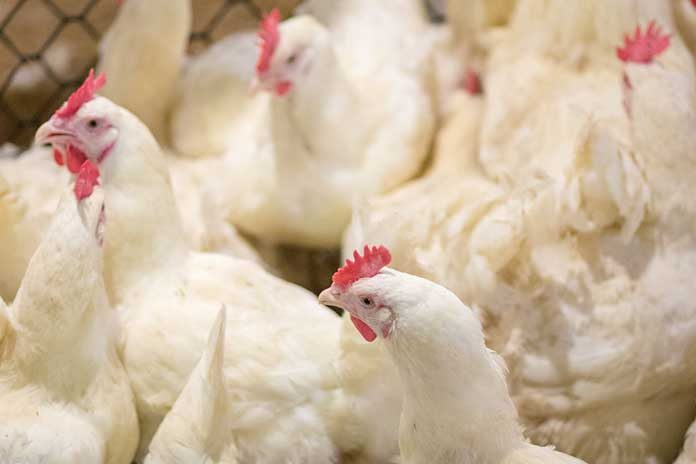
A previous study highlighted differences between a low protein (LP) diet and a higher concentration of amino acids (AA) for intestinal permeability and performance (Barekatain et al. 2018). It is hypothesised that individual AA such as glycine, glutamine and arginine may improve gut health and barrier function of birds fed LP diets. To test this hypothesis in a broiler study, two basal diets were prepared as follows: 1) a standard diet (SD) containing 225 g/kg crude protein (CP) in grower and 202 g/kg CP in finisher and 2) a LP diet containing 202 g/kg and 176 g/kg CP in grower and finisher diets. The LP diets were supplemented with synthetic AA to match the SD.
The SD was based on wheat, sorghum, soybean meal and meat and bone meal. Tested AA were added to the LP diet to make five treatments.
Glutamine and glycine were added at 10 g/kg while arginine was added at 5 g/kg. For general performance, male off-sex Ross 308 broilers (n=300) were assigned to grower (d 7-21) and finisher diets (d 22-35) each replicated six times. To evaluate the role of tested AA on gut permeability, an additional 96 birds receiving LP diets supplemented with glutamine, glycine and Arginine were transferred to individual metabolism cages on day 13. This part of the study comprised a 4 x 2 factorial arrangement with factors being LP diets and injection of dexamethasone (DEX), a synthetic glucocorticoid, to induce ‘leaky gut’. The injections were given at 0.5 mg/kg on d 14, 16, 18 and 20 to half of the birds (12 birds per diet). The fluorescein isothiocyanate dextran (FITC-d) method was utilized as the gut permeability test on d 21. Birds on the LP diet consumed more feed and had a higher weight gain (WG) compared to SD (Table 1). Adding glutamine to LP diet reduced feed intake and WG to the level observed for the standard diet with no positive effect on feed conversion ratio (FCR). Birds fed the glycine diet had similar WG to the LP diet. Additional Arg improved FCR compared to both standard and LP diets.

There was a tendency (P=0.086) for arginine and glycine diets to reduce the FITC-d concentration in serum which suggests a lower gut permeability associated with Arg treatment followed by glycine fed birds (data not shown). DEX independently increased FITC-d concentration in serum for all dietary treatments (P<0.001).
To conclude, results show that LP diets can improve bird performance, with arginine and glycine being beneficial to both performance and intestinal barrier of broilers.
Acknowledgment: This research is part of a project supported by AgriFutures Australia.
References: Barekatain R, Nattrass G, Kitessa SM, Chousalkar K & Gilani S (2018) Proc. Aust. Poult. Sci. Symp. 29: 28.
From the Australian Poultry Science Symposium

















